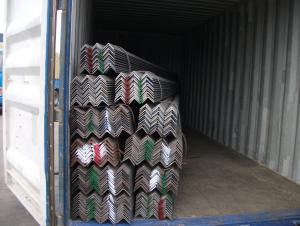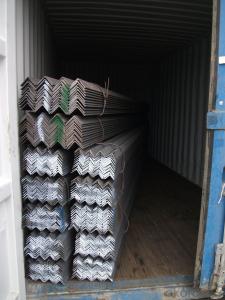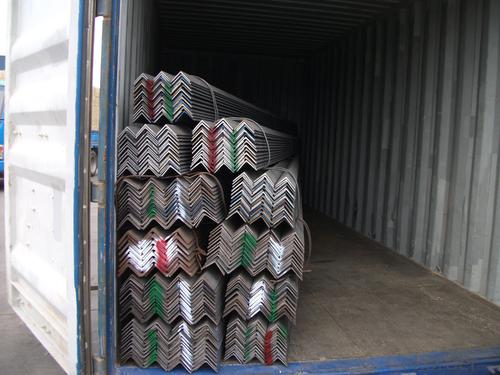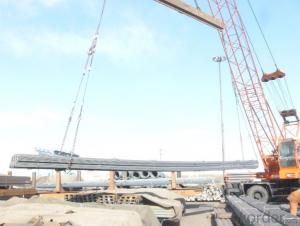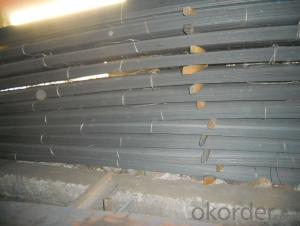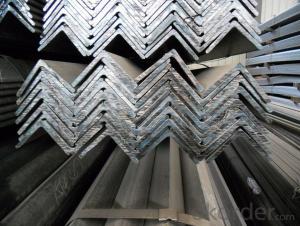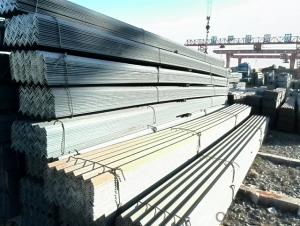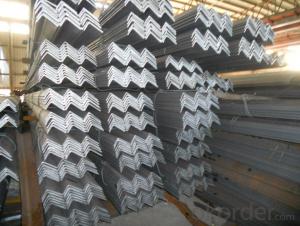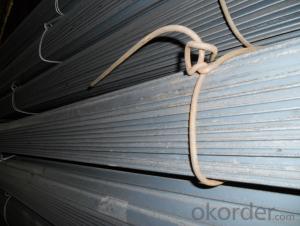Hot Rolled Steel Equal Angle High Quality
- Loading Port:
- China Main Port
- Payment Terms:
- TT or LC
- Min Order Qty:
- -
- Supply Capability:
- -
OKorder Service Pledge
OKorder Financial Service
You Might Also Like
Product Description:
OKorder is offering Angle Bar at great prices with worldwide shipping. Our supplier is a world-class manufacturer of steel, with our products utilized the world over. OKorder annually supplies products to European, North American and Asian markets. We provide quotations within 24 hours of receiving an inquiry and guarantee competitive prices.
Product Applications:
According to the needs of different structures, Angle can compose to different force support component, and also can be the connections between components. It is widely used in various building structures and engineering structures such as roof beams, bridges, transmission towers, hoisting machinery and transport machinery, ships, industrial furnaces, reaction tower, container frame and warehouse etc.
.
Product Advantages:
OKorder's Angle Bar are durable, strong, and resist corrosion.
Main Product Features:
· Premium quality
· Prompt delivery & seaworthy packing (30 days after receiving deposit)
· Corrosion resistance
· Can be recycled and reused
· Mill test certification
· Professional Service
· Competitive pricing
Product Specifications:
1. Invoicing on theoretical weight or actual weight as customer request
2. Length: 6m, 9m, 12m as following table
3. Sizes
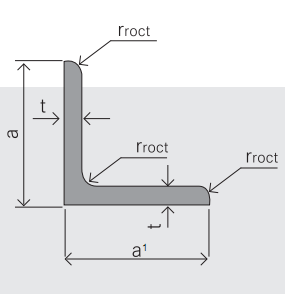
Sizes: 25mm-250mm | ||
a*t | ||
25*2.5-4.0 | 70*6.0-9.0 | 130*9.0-15 |
30*2.5-6.6 | 75*6.0-9.0 | 140*10-14 |
36*3.0-5.0 | 80*5.0-10 | 150*10-20 |
38*2.3-6.0 | 90*7.0-10 | 160*10-16 |
40*3.0-5.0 | 100*6.0-12 | 175*12-15 |
45*4.0-6.0 | 110*8.0-10 | 180*12-18 |
50*4.0-6.0 | 120*6.0-15 | 200*14-25 |
60*4.0-8.0 | 125*8.0-14 | 250*25 |
4. Chemical data: %
C | Mn | S | P | Si |
0.14-0.22 | 0.30-0.65 | ≤0.050 | ≤0.045 | ≤0.30 |
FAQ:
Q1: Why buy Materials & Equipment from OKorder.com?
A1: All products offered byOKorder.com are carefully selected from China's most reliable manufacturing enterprises. Through its ISO certifications, OKorder.com adheres to the highest standards and a commitment to supply chain safety and customer satisfaction.
Q2: How do we guarantee the quality of our products?
A2: We have established an advanced quality management system which conducts strict quality tests at every step, from raw materials to the final product. At the same time, we provide extensive follow-up service assurances as required.
Q3: How soon can we receive the product after purchase?
A3: Within three days of placing an order, we will begin production. The specific shipping date is dependent upon international and government factors, but is typically 7 to 10 workdays.
Images:
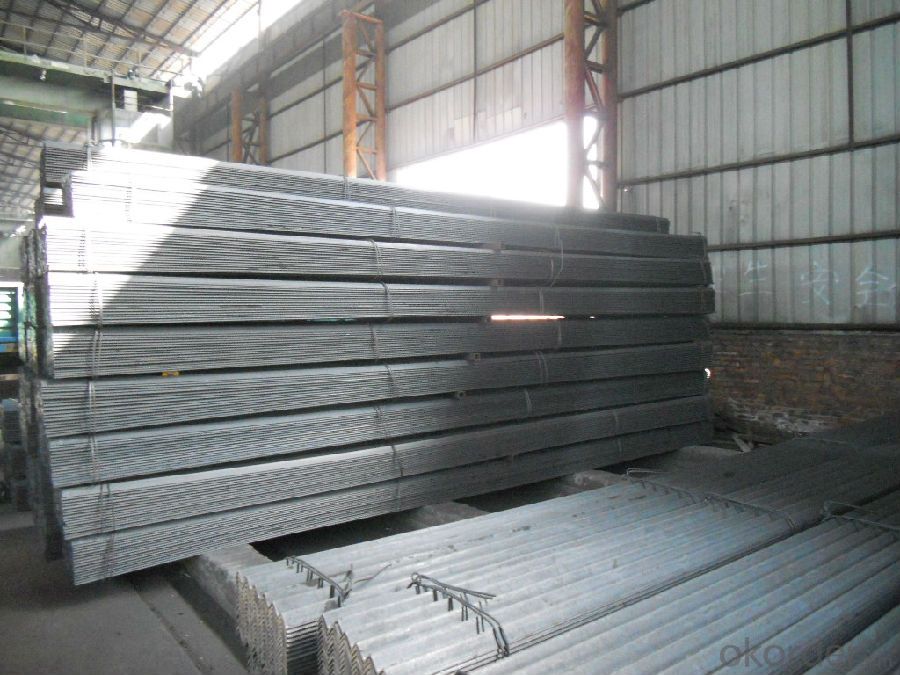
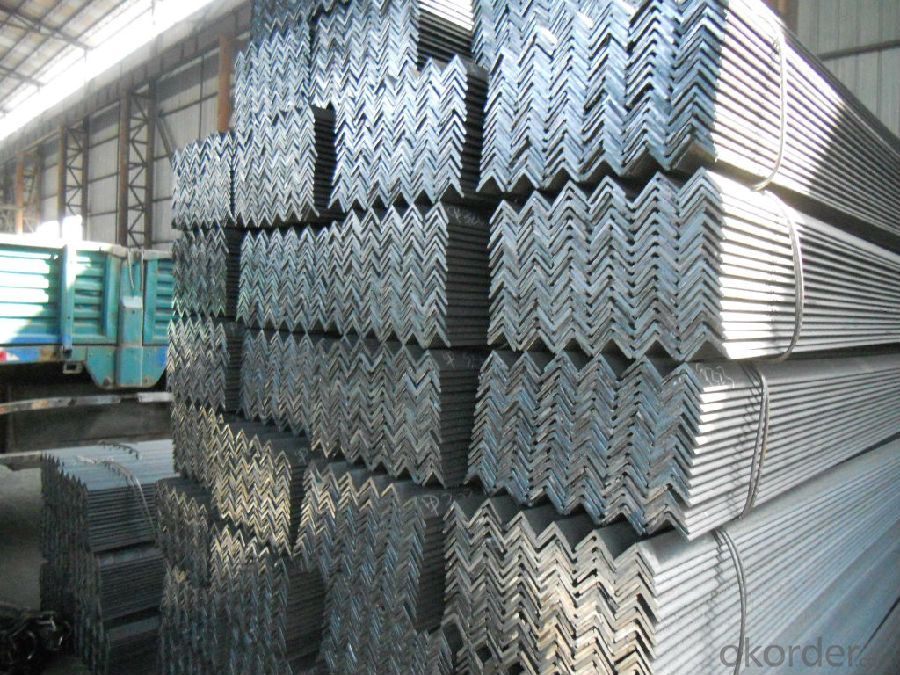
- Q: Bearing capacity of angle steel and channel steel
- Angle called angle, the steel strip is perpendicular to each other on both sides into the corner. There are equal angles and unequal angles. The two sides of an equal angle steel are equal in width. The specifications are expressed in millimeters of edge width * edge width * edge thickness. Such as "/ 30 x 30 x 3", that is 30 mm width equal angle, edge thickness of 3 mm. Also available models that model is the number of centimeters wide, such as angle 3#. The model does not mean the size of the different edges and sizes of the same model. Therefore, the width, the edge and the thickness of the angle iron should be filled out in the contract and other documents, so as not to be indicated by the model alone. Standard Specification for hot-rolled equal angle iron is 2#-20#. The angle iron can be made up of different force components according to the different structure, and can also be used as the connecting piece between the components. Widely used in a variety of architectural and engineering structures, such as beams, bridges, towers, hoisting and conveying machinery, ships, industrial furnace, reaction tower, container frame and warehouse.Angle steel performance index: the performance test of angle iron is mainly tensile test and bending test. Indicators include yield point, tensile strength, elongation and bending compliance.
- Q: Can steel angles be used for pedestrian bridges or walkways?
- Indeed, pedestrian bridges or walkways can utilize steel angles. Construction frequently employs steel angles owing to their robustness, longevity, and adaptability. By means of simple fabrication and welding, steel angles can effortlessly form the desired structural components for bridges and walkways. Bearing exceptional load capacities, steel angles are well-suited for supporting pedestrian traffic. Moreover, steel's corrosion-resistant qualities render it an ideal option for outdoor applications subject to weather exposure. In summary, the reliability and capacity to meet essential structural criteria render steel angles a favored selection for pedestrian bridges and walkways.
- Q: What are the different fabrication techniques used for steel angles?
- Steel angles can be fabricated using various techniques, depending on specific requirements and desired outcomes. Some commonly used techniques include: 1. The most common fabrication technique for steel angles is hot rolling. In this process, the steel is heated above its recrystallization temperature and shaped into the desired angle profile by passing it through a series of rollers. Hot rolling improves the mechanical properties of the steel and provides a smooth surface finish. 2. Cold rolling, similar to hot rolling, is performed at room temperature. It is often used to produce steel angles with tighter dimensional tolerances and improved surface finish, while also enhancing the mechanical properties of the steel. 3. Laser cutting is a precise and efficient method used to cut steel angles into the desired shape and size. A high-powered laser beam melts or vaporizes the material along the cutting path, offering excellent accuracy, speed, and versatility. 4. Welding is commonly employed to join steel angles together or attach them to other structural components. Various welding techniques, such as arc welding, gas metal arc welding (MIG), or tungsten inert gas (TIG) welding, can be used depending on the application and desired joint strength. 5. Bending is another technique utilized to fabricate steel angles. It involves applying force to bend the steel into the desired angle shape. Bending can be achieved using press brakes, rollers, or hydraulic machines. This technique is particularly useful when precise angle measurements and specific radius requirements are necessary. 6. CNC machining, a highly precise and automated technique, is employed to produce steel angles with complex shapes and intricate details. Computer-controlled tools remove material from the steel, creating the desired angle profile. Each fabrication technique has its own advantages and limitations. The choice of technique depends on factors such as angle dimensions, tolerances, surface finish requirements, and the intended application of the steel angles.
- Q: How do you store steel angles to prevent damage?
- Steel angles can be stored to prevent damage by ensuring they are stored in a dry, well-ventilated area, preferably indoors. They should be stacked on a flat surface and separated by wooden or rubber spacers to avoid direct contact and potential scratching. Additionally, storing them in an organized manner, with heavier angles at the bottom and lighter ones on top, can help prevent any potential bending or warping.
- Q: Can steel angles be used in the construction of oil refineries?
- Yes, steel angles can be used in the construction of oil refineries. Steel angles are commonly used in structural applications due to their strength and versatility. They can provide structural support, reinforce connections, and enhance the overall stability of the refinery infrastructure.
- Q: How do you prevent steel angles from twisting?
- To prevent steel angles from twisting, proper bracing and support should be provided during installation. Additionally, using welds or mechanical fasteners at appropriate intervals along the length of the angle can help to enhance its stability and prevent twisting.
- Q: Can steel angles be used for bracing?
- Yes, steel angles can be used for bracing. Steel angles are commonly used as structural supports to provide strength and stability in various applications, including bracing in construction and engineering projects. Their L-shaped design allows them to distribute forces and resist bending, making them suitable for bracing purposes.
- Q: Can steel angles be used as reinforcements in masonry walls?
- Yes, steel angles can be used as reinforcements in masonry walls. Steel angles are commonly used in construction to provide additional strength and support to various structures, including masonry walls. They can be strategically placed within the wall to help distribute the load and prevent cracking or structural failure. Steel angles are typically made from galvanized or stainless steel, which makes them resistant to corrosion. This makes them a suitable choice for reinforcing masonry walls, as they can withstand the elements and provide long-lasting support. Additionally, steel angles can be easily customized to fit the specific requirements of the wall, allowing for flexibility in design and reinforcement. Overall, steel angles are a reliable and effective option for reinforcing masonry walls.
- Q: What are the safety precautions when working with steel angles?
- When working with steel angles, it is important to follow a few safety precautions. Firstly, always wear appropriate personal protective equipment (PPE) such as safety glasses, gloves, and steel-toed boots to protect yourself from potential injuries. Secondly, ensure that the work area is clear of any obstructions or tripping hazards to prevent accidents. Additionally, make sure to use proper lifting techniques or equipment when handling heavy steel angles to avoid strains or back injuries. Lastly, be cautious of sharp edges and corners on the steel angles and use appropriate tools and techniques to prevent cuts or abrasions.
- Q: Can steel angles be used in bridges?
- Yes, steel angles can be used in bridges. Steel angles are often used as structural elements in bridge construction due to their strength, versatility, and ability to provide support and stability. They can be used in various bridge components such as beams, trusses, and connections, helping to distribute loads and resist forces in bridge structures.
Send your message to us
Hot Rolled Steel Equal Angle High Quality
- Loading Port:
- China Main Port
- Payment Terms:
- TT or LC
- Min Order Qty:
- -
- Supply Capability:
- -
OKorder Service Pledge
OKorder Financial Service
Similar products
Hot products
Hot Searches
Related keywords
